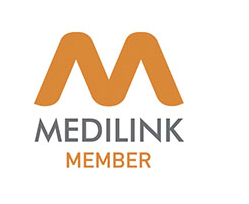Charities often rely on donations to fund their operations, and in today's digital age, many donors are more likely to give online. Therefore, it is essential for charities to have strong digital solutions, such as a website and social media presence, to reach potential donors and manage their donations. Additionally, digital solutions can help charities improve their operations by streamlining communication and collaboration among staff members and providing new ways to engage with their beneficiaries. Finally, a strong digital presence can help charities increase their visibility and reach, leading to more donations and support for their cause.
As the world becomes more connected, we're finding that it's easier than ever for charities to reach their donors. We have a few simple suggestions for how your charity can maximise this opportunity through digital tools:
1. Social media presence
Social media is a great way to reach out to donors and potential donors. You can share content that they will find interesting, which will help them know more about your charity. They can then share that content with their friends, who may donate or volunteer with you in the future. Social media also gives donors an opportunity to engage with you and ask questions about your charity's work, helping them understand what you do and why it's important for them to support it through their donations or volunteering efforts. Finally, social media provides another platform for people interested in learning about charities generally (and yours specifically). On this platform, people often share information about their favourite charities and encourage others to donate as well; this can lead directly via referral links back into traditional donation channels like PayPal or through social sharing buttons like Meta (Facebook's) "Share" button (which makes sharing easy but also gives users control over whether they include personal information).
2. Donor management software
The second way to take advantage of technology is to use donor management software. This software can help you keep track of your donors, manage your donor database and track donations. It also has the benefit of helping you manage your fundraising campaigns by allowing you to segment donors based on their interests and donation amounts.
3. Mobile-friendly website
Mobile devices are the most popular device for online access. As a result, your website should be mobile-friendly. A mobile-friendly website is easy to use on smaller screens, accessible to all and easier to navigate than non-mobile-friendly sites. Your site should be designed with a responsive design so it automatically adjusts itself depending on the screen size of your device.
If you don't have a mobile-friendly site yet, let us help you create one as soon as possible!
4. Website that emphasises donor's intentions and impact
-
Your website should clearly communicate the impact of giving, whether that's through a story or by providing information about the charity's programs.
-
Donors should be able to easily share their intentions and impact on social media, email, text messages, etc.
5. Search engine-optimised website
A charity’s website is a key part of its online presence but can also serve as an important fundraising tool. For example, if your organisation has a dedicated “donate” button on its site, you might see more donations if that button is prominent and easy to find. SEO helps your website rank higher in search engines so people will find you when they are looking for charities like yours. SEO is not just about keywords or tags; it's about creating content that engages potential donors from the first moment they land on your site.
6. Online donation form on the homepage
A secure, easy-to-find online donation form can be a major boon for any charity. Getting your donors as close as possible to the payment process is always best, so they don’t have to fill out any forms on their way back from making a purchase.
If you have an offline donation form and are thinking about putting one online, make sure you consider what the user experience will be like on mobile devices. A mobile-responsive design is essential for the usability of your website across different screen sizes, but it doesn't solve all issues with poor usability.
7. A blog for a newsfeed and keeping donors updated on your work
-
You can use a blog to share news and updates about your charity's work.
-
You can use a blog to engage with donors in different ways, such as sharing stories or asking them questions.
-
Your charity's blog can be used to share information about what you do and how you're helping people - which will help potential donors see how their money is being put to good use - and why they should support your cause by making donations in order to fund it further!
8. Social media buttons on the website linked to your charity's social media profiles
Social media buttons are a good way to make it easy for people to share your content. Implementing them on your website is a great way to increase the number of interactions you have with supporters, as well as encourage more followers on social media.
Make sure that these buttons are clearly visible and positioned at the top of all pages (or at least your homepage) so that they can be clicked easily. Many organisations place these in the footer, but this isn't always ideal as it doesn't allow users enough time or space to read through their content before clicking away from the site.
The last step is linking these buttons back to your charity's social media profiles - this means that when someone clicks on one of them, they'll take them straight into whichever platform that button represents rather than just opening up an entirely different window for them!
9. Addition of multimedia content to the website (photos, videos, audio)
In addition to a standard website, charities can benefit from adding multimedia content (photos, videos, and audio). This can help donors see what their money is going toward and hear about your work and impact.
Multimedia content can connect with new audiences in many different ways. For example, charities can share multimedia content on social media channels or use it in email campaigns. The addition of multimedia content will help you reach a wider audience.
10. E-newsletter campaign that is mobile-friendly and easy to share via email and social media channels
-
E-newsletter campaign that is mobile-friendly and easy to share via email and social media channels
It's important to ensure your e-newsletter is mobile-friendly since most people are now reading their emails on their phones. If you have a large database of supporters, consider using an automated service like MailChimp to send out your e-newsletters. This way, you don't need a dedicated in-house team of writers or graphic designers.
You can also use social media buttons in the newsletter itself to promote your charity's social media profiles (Twitter, Facebook, Pinterest etc.). This will help ensure that people who receive the email can take further action by following those links back into your digital world!
Claim your free UX workshop.
The world is changing, and so is how we give and receive donations. These ten digital ideas will help you keep up with the demand for new technologies and trends. Whether you’re a nonprofit looking to get started with social media or an existing organisation looking to expand your reach further into social networks, these tools can help you do that—and more!
Alternatively, claim your free half-day UX workshop tailored to the charities sector. It will provide insights on how to improve your websites, apps or digital platforms. These workshops include interactive sessions on user research, prototyping and testing, and effective communication and engagement strategies with donors and volunteers.






